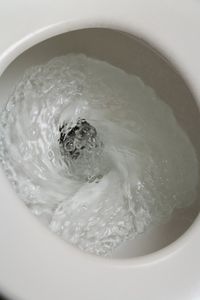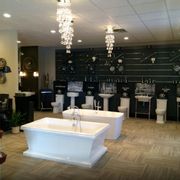
When it comes to toilets, there’s a common misconception that “low-flow” means “weak flush.” Don’t let the name fool you though; these eco-friendly toilets work just as hard as regular ones, but they don’t waste as much water. If you’ve been considering swapping out your regular toilet for a low-flow model, here’s a quick guide to what you need to know about these environmentally friendly bathroom fixtures.
How Do Low Flow Toilets Work?
Low-flow toilets come in two varieties: gravity-fed and pressure-assisted. Though they work a little differently, they achieve the same goal of using less water. Gravity-fed toilets are the more popular choice. As the name implies, these bathroom fixtures rely on gravity to function. Water flows down from the tank and gravity does the rest, forcing the bowl’s contents down the drain.
Pressure-assisted toilets look like similar to gravity-fed models until you look beneath the tank lid. Where the tank in gravity-fed toilets is full of water, pressure-assisted toilets contain a plastic pressure tank. As the tank fills with water, it’s held in place by pressure. When you flush, the pressurized water is forced into the bowl by a powerful one-two punch of gravity and water.
How Much Water Do They Really Conserve?
 Regular toilets, particularly older ones, use somewhere from 3.5 to 7 gpf (gallons per flush). The federal standard for toilets changed in 1992, requiring all toilets to be manufactured to use only 1.6 gpf. Some newer models can use as little as 1.28 gpf. As toilets have a life span of easily 100 or more years, most people don’t think to replace them until they break or when they want something more modern. Replacing one of these pre-1992 toilets with a newer model can reduce water usage in the house by 20 to 60%. This translates to 13,000 gallons or $110 a year.
Regular toilets, particularly older ones, use somewhere from 3.5 to 7 gpf (gallons per flush). The federal standard for toilets changed in 1992, requiring all toilets to be manufactured to use only 1.6 gpf. Some newer models can use as little as 1.28 gpf. As toilets have a life span of easily 100 or more years, most people don’t think to replace them until they break or when they want something more modern. Replacing one of these pre-1992 toilets with a newer model can reduce water usage in the house by 20 to 60%. This translates to 13,000 gallons or $110 a year.
What Should You Look for in a Water-Saving Bathroom Fixture?
Choosing a low-flow toilet is mostly about preference. The main feature to look for is the WaterSense sticker. This label indicates that the product has been lab-tested and achieves the lowest flush capability of 1.28 gpf. Besides that, you’ll want to look for a color that fits with your bathroom’s decor and a shape and size you’re happy with.
Looking for a low-flow toilet for your home? Lincoln Winnelson in Lancaster County, NE, can help. This wholesaler carries a long list of top brands, including Moen® and Delta®, and will take the time to help you choose the right bathroom fixtures for home, style, and budget. Visit their website to check out their product lines or take a virtual tour of their showrooms. Call them today at (402) 423-1610 to ask about special discounts.
About the Business
Have a question? Ask the experts!
Send your question

